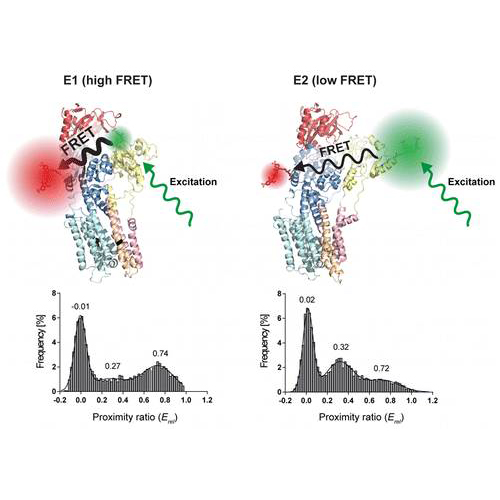New publication from Poul Nissen's group - Engineering a Prototypic P-type ATPase Listeria monocytogenes Ca2+-ATPase 1 for Single-Molecule FRET Studies
Approximately 30% of the ATP generated in the living cell is utilized by P-type ATPase primary active transporters to generate and maintain electrochemical gradients across biological membranes. P-type ATPases undergo large conformational changes during their functional cycle to couple ATP hydrolysis in the cytoplasmic domains to ion transport across the membrane. The Ca2+-ATPase from Listeria monocytogenes, LMCA1, was found to be a suitable model of P-type ATPases and was engineered to facilitate single-molecule FRET studies of transport-related structural changes. Mutational analyses of the endogenous cysteine residues in LMCA1 were performed to reduce background labeling without compromising activity. Pairs of cysteines were introduced into the optimized low-reactivity background, and labeled with maleimide derivatives of Cy3 and Cy5 resulting in site-specifically double-labeled protein with moderate activity. Ensemble and confocal single-molecule FRET studies revealed changes in FRET distribution related to structural changes during the transport cycle, consistent with those observed by X-ray crystallography for the sarco/endoplasmic reticulum Ca2+ ATPase (SERCA). Notably, the cytosolic headpiece of LMCA1 was found to be distinctly more compact in the E1 state than in the E2 state. Thus, the established experimental system should allow future real-time FRET studies of the structural dynamics of LMCA1 as a representative P-type ATPase.

